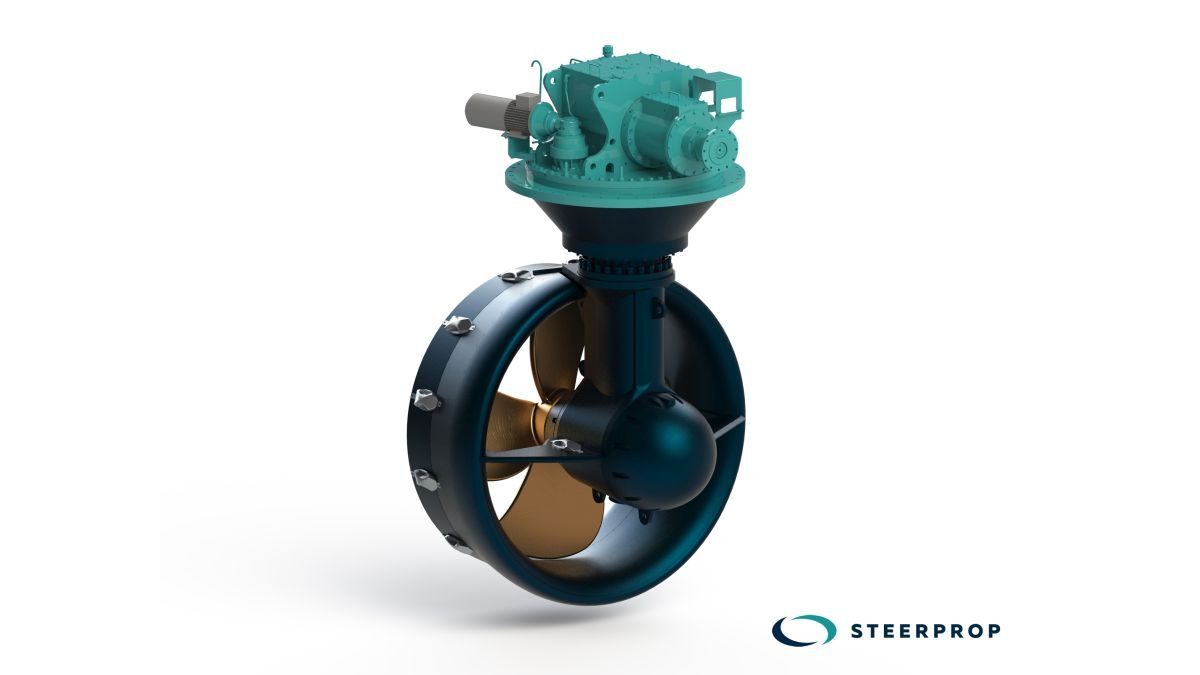Hybrid propulsion, electrical power, energy storage and generators could replace engines on harbour tugs to reduce emissions
Owners need to consider operating profiles and power requirements closely when selecting hybrid propulsion systems for tugs, attendees heard at Riviera Maritime Media’s Propulsion solutions for powerful tugs and efficient towage webinar.
This was held 8 June with premier partner, Uzmar, and sponsored by Wärtsilä and Steerprop, during Riviera’s TUGTECHNOLOGY Webinar Week.
Wärtsilä Marine Power product manager for thrusters Joost van Eijnatten and Steerprop sales manager Donato Agostinelli outlined solutions for tug owners seeking to balance power, efficiency and compliance with stricter environmental regulations including IMO Tier III and US Environmental Protection Agency (EPA) Tier 4 emissions requirements.
They explained how operators can plan for rising bollard pull demand to handle larger ships entering ports worldwide and review evolving tug designs to meet changing port and shipowner requirements.
Mr van Eijnatten outlined the key factors influencing changes to tug propulsion design and installations. These are larger ships in ports, increasing tug capabilities, decarbonisation, efficiency improvements, IMO Tier III and US EPA Tier 4, alternative and future fuels and emission control areas.
Potential solutions for tug owners, builders and designers include installing hybrid propulsion, electric systems, energy storage, fuel cells and dual-fuel engines.
“Selection of solutions will depend on vessel type and its operational profile,” said Mr van Eijnatten. Different solutions will be used to reduce emissions from harbour, escort, support and pusher tugs, and for whenthese are on standby, conducting towage in ports or working offshore.
Mr van Eijnatten presented a case study of a tugboat designed for standby and fire-fighting near a new floating LNG storage and regasification unit in China. For this project, Robert Allan Ltd provided its RAstar 4200 DF design for a dual-fuel tug being built by Cheoy Lee Shipyards for Hongkong United Dockyards.
“This tug will be on duty all year around, with expectations it will be operating at 10-15% of the engine load for 85-90% of the time,” he said. “But the bollard pull requirement was for more than 100 tonnes.”
The initial concept involved a mechanical propulsion layout with Wärtsilä 6L34 DF engines driving two Wärtsilä stern thrusters WST-32 with controllable-pitch (CP) propellers, plus a Wärtsilä LNGPac, bunkering and vapour return skid.
“This turned into an electric propulsion layout,” said Mr van Eijnatten. This comprised two Wärtsilä 9L20 DG sets, two Wärtsilä 8L20 DF DG sets and two WST-32 thrusters with fixed-pitch (FP) propellers.
“Fuel savings are 12% and could increase to 37% by adding energy storage,” he added.
For a second case study, Wärtsilä evaluated nine propulsion layouts for a harbour tug, comparing conventional mechanical propulsion with FP or CP propellers, hybrid propulsion with power take-in (PTI), or power take-out (PTO) units, generator sets and batteries.
Their potential performance and fuel consumption were reviewed against specific operational profiles.
Compared with conventional diesel-mechanical with FP propellers, a hybrid setup with CP propellers reduced fuel consumption by 11% and hybrid-FP had 22% fuel savings.
“Emissions follow fuel savings and maintenance costs would also go down significantly as engines are running less hours,” said Mr van Eijnatten.
Hybrid propulsion with energy storage has many other advantages over mechanical-diesel setups such assmokeless engine start-up, faster power ramp-up, optimum engine loading, instant load capabilities and back-up power.
“If we want to be more efficient it is possible to do this by adopting hybrid propulsion layouts,” said Mr van Eijnatten. “What is important is system integration – it all needs to work seamlessly together.”
Tug owners need to consider the additional capital expenditure and designers need to provide more room to accommodate batteries and hybrid propulsion. “For every decision, there needs trust the investment can be paid back,” he said.
There is extra complexity in hybrid propulsion layout and questions over battery lifetime and maintenance requirements. But more tugs are being built with electric-drives and batteries, for primary or secondary power.
Ice operations
Mr Agostinelli said selecting thrusters would depend on bollard pull and power requirements, operating conditions and manoeuvrability. Steerprop is a leader in supplying propulsors to icebreakers and ice-class tugs and workboats with series of thrusters ranging from 900 kW to 15 MW.
Tug operating profiles are changing, with more demand for flexible vessels able to operate further from coastlines and handle larger ships. There is more demand for tugs able to work in ice conditions, providing ice milling and management, and towing or escorting ships through ice.
Mr Agostinelli said owners looking to order tugs and select propulsion need to consider the ice class and regulations, whether it is year-round ice operations or with summer navigation.
“They need the right thruster for the right application,” he said. Tugs may need ducted thrusters for high pushing forces or counter rotating propellers for steady speed through ice for long periods.
“Once the thruster is pinpointed, they should look at the best power configuration,” said Mr Agostinelli. For example, Z drives are suitable for harbour tugs. They can have an integrated /heavy-duty clutch, hydraulic or electrical or electro-hydraulic steering. A hybrid J-drive has no heavy-duty clutch for operating fire-fighting systems, but does have high-efficiency, permanent-magnet motors and links to electric power.
Steerprop’s LM-drive has these motors and connections, but with electric machinery safely positioned on board the vessel.
“It is interesting to see rising operational requirements in bollard pull and propulsion options are becoming more efficient,” Mr Agostinelli said. “There needs to be discussions with designers and owners to see if other options are available. There is a need for larger and more customised tugs in the future.”
He said whatever the propulsion decision, owners should invest in condition monitoring for the highest possible reliability, based on enhanced predictability, safety and productivity.
“As we move further away from shore, and as the operational demands increase, it becomes even more important to know how your system’s health is in real time, to avoid any costly, environmental and life-threatening incidents,” he said.






